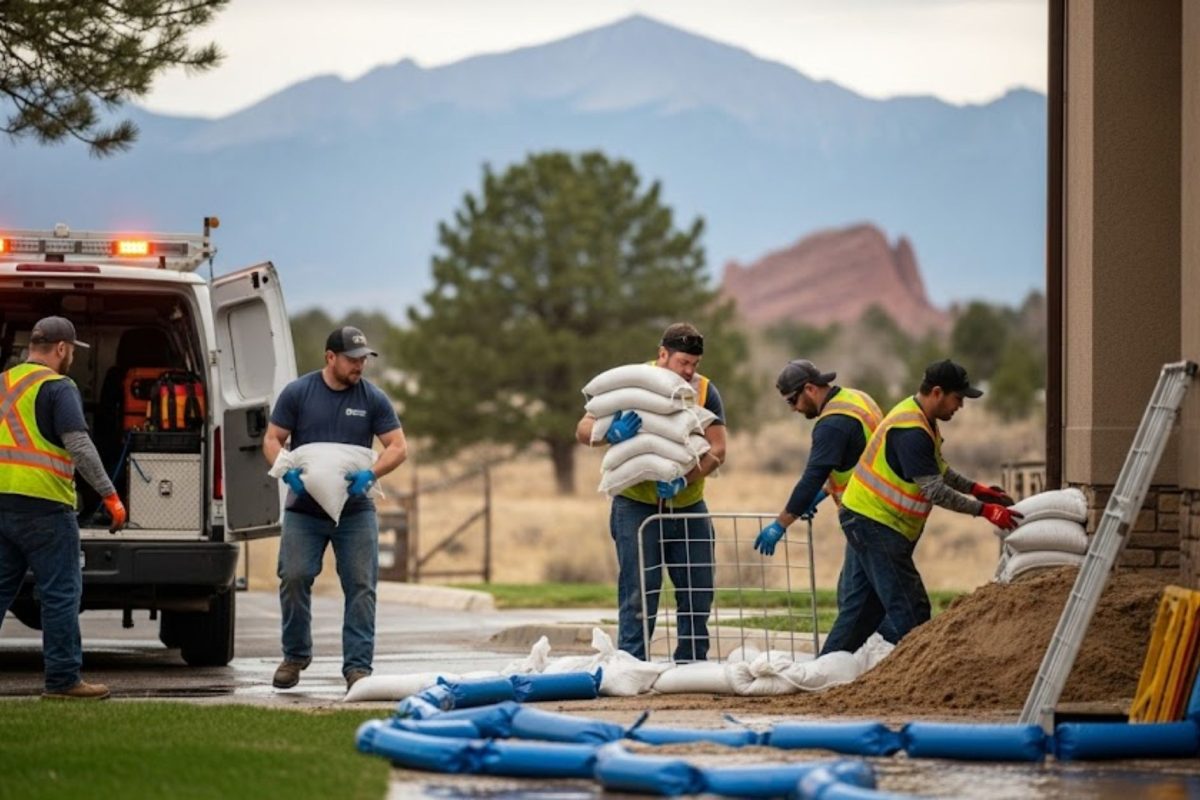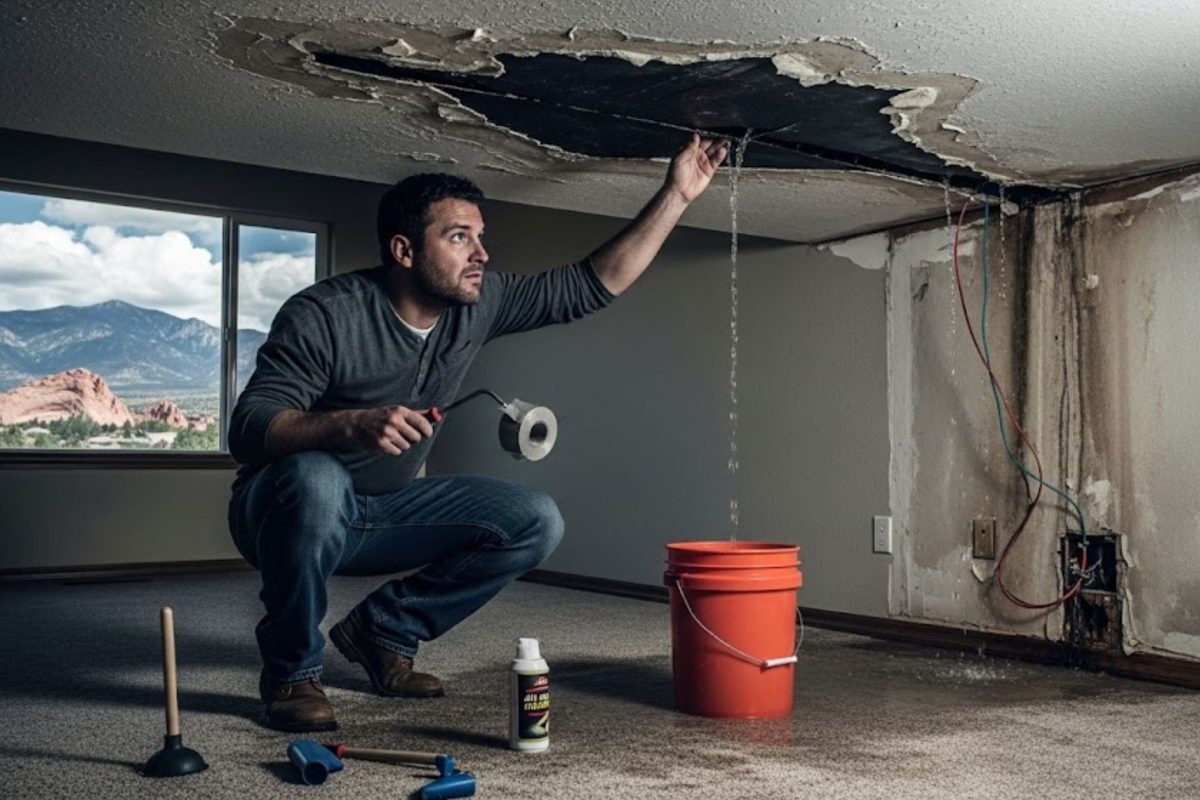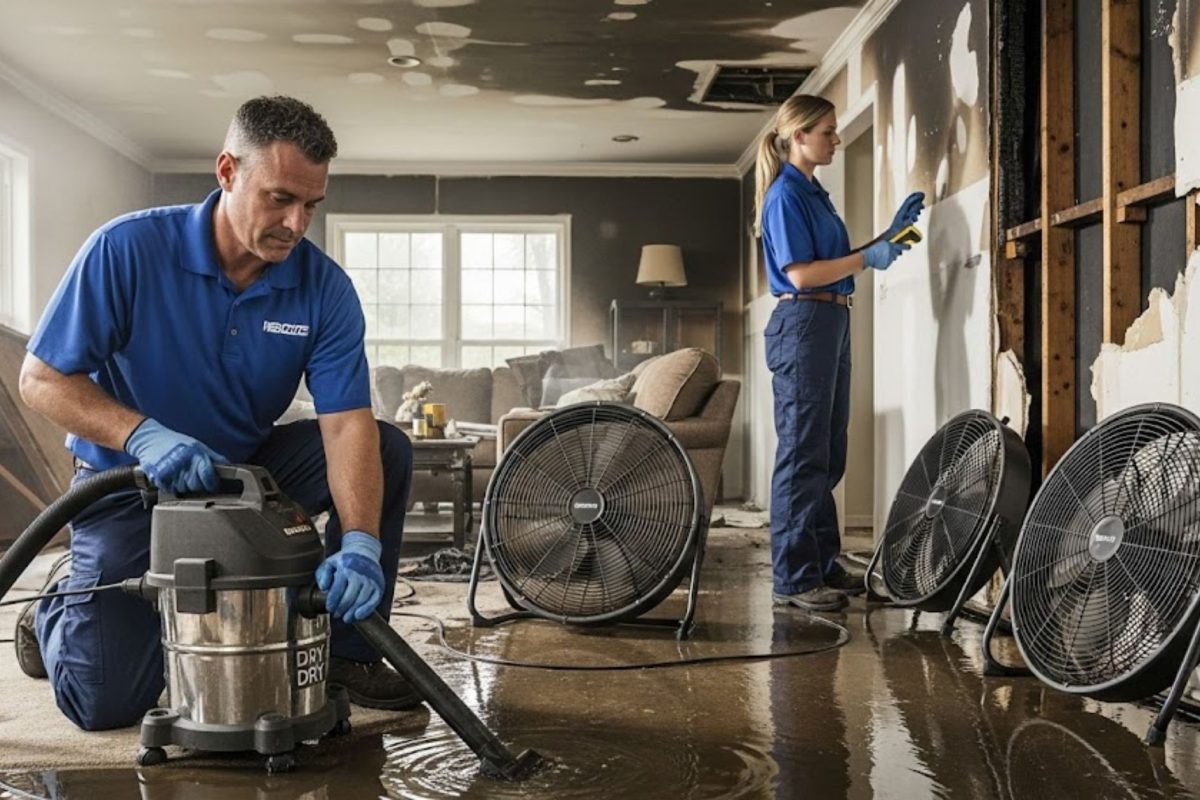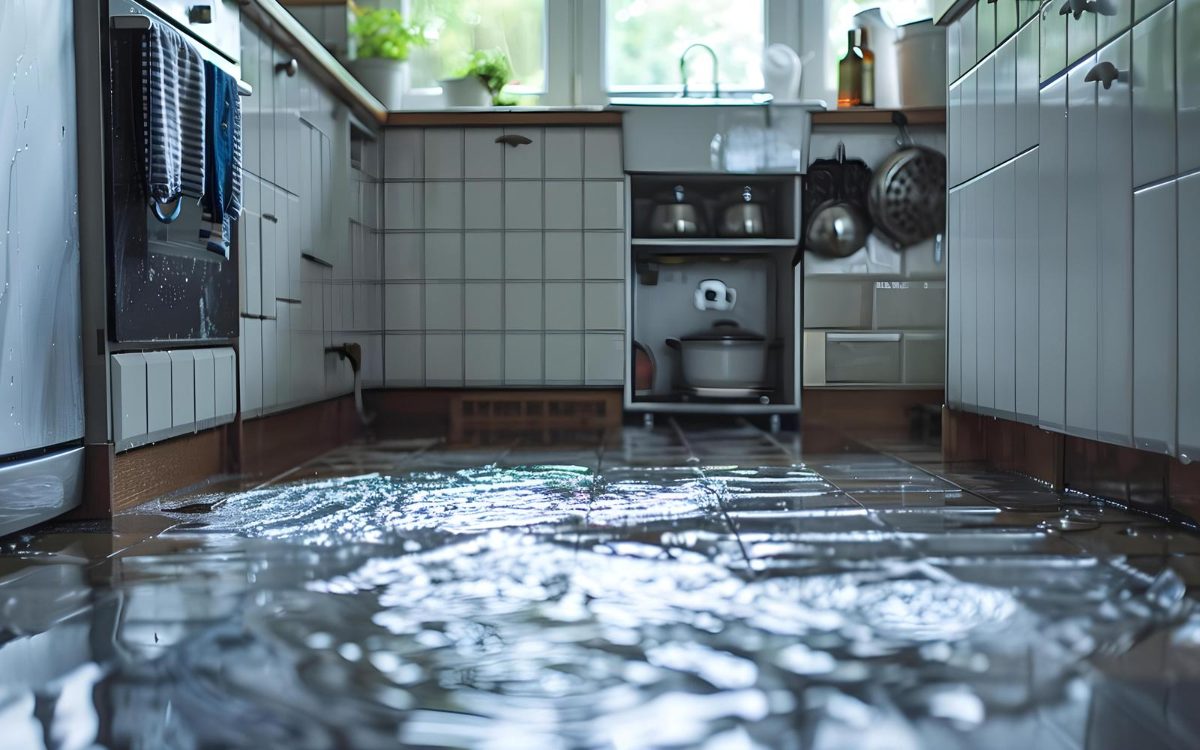When sudden disasters hit El Paso County and the surrounding Front Range, homeowners and businesses urgently seek professional help. Property Damage Restoration Colorado Springs specialists arrive on scene within minutes, equipped to tackle water damage, fire damage, mold remediation, and storm-related destruction. These teams are trained to respond to anything from basement floods caused by snowmelt near Pikes Peak to wind-driven hailstorms in Teller County. By integrating rapid water damage restoration techniques and advanced equipment such as thermal imaging cameras, they minimize structural loss and restore properties swiftly.
What Emergency Scenarios Prompt Property Damage Restoration Colorado Springs to Act Immediately?
Property Damage Restoration Colorado Springs teams encounter a spectrum of emergencies, each demanding unique mitigation steps. Burst pipes from winter freeze-thaw cycles can flood entire basements in minutes, ruining flooring, drywall, and personal belongings. Severe thunderstorms often accompany hail and high winds, compromising roofs and windows and creating entry points for water intrusion. Wildfires like the Waldo Canyon Fire leave behind unstable structures and soot contamination, requiring urgent stabilization and smoke odor removal.
In each scenario, 911 dispatch signals the restoration company, triggering a triage protocol that evaluates safety hazards and resource allocation. Technicians coordinate with fire departments and insurance adjusters to secure board-up or tarp-over measures that prevent further damage. Once on site, they rapidly assess moisture levels, structural integrity, and contents salvageability. This immediate action is critical to curb microbial growth and secondary mold outbreaks, ensuring healthier indoor air quality post-restoration.
How Do Rapid Response Restoration Services Coordinate Emergency Response in Colorado Springs?
Rapid response restoration services in Colorado Springs operate on a 24/7 dispatch model, blending call-center logistics with field-ready crews. From the moment a property owner calls, project managers log the incident into a centralized system that tracks response time, crew assignments, and equipment needs. The objective is clear: arrive on site within one hour whenever possible. Specialized vehicles carry structural drying kits, air movers, dehumidifiers, and moisture meters to evaluate water damage spots in real time.
Through GPS tracking and mobile reporting tools, team leads update clients and insurance companies with digital moisture maps and site photographs. Collaboration platforms integrate scheduling, client notes, and invoicing into one workflow, reducing administrative delays. At designated staging areas in Colorado Springs and nearby communities, surge equipment—like truck-mounted extractors and HEPA-filtered air scrubbers—is preloaded to meet peak demand during spring runoff or monsoon seasons.
| Service Stage | Average Response Time |
|---|---|
| Initial Call to Site Arrival | 45–60 minutes |
| Moisture Mapping & Documentation | 30 minutes |
| Board-Up or Tarp-Over Setup | 1–2 hours |
| Structural Drying Initiation | 2–4 hours |
How Does a 24/7 Emergency Restoration Colorado Springs Service Ensure Continuous Coverage?
Maintaining round-the-clock readiness requires robust staffing and monitoring systems. Emergency hotlines are answered by trained coordinators who classify the incident based on severity: Category 1 (clean water), Category 2 (gray water), or Category 3 (black water contamination). These classifications drive immediate protocols for personal protective equipment and biohazard containment. Technicians work in rotating 12-hour shifts to provide unbroken on-call support, ensuring that no blackout gaps leave clients stranded.
Regional hubs equipped with backup generators house critical drying and remediation machinery to avoid delays during power outages. A strategic partnership with local power utilities guarantees prioritized grid restoration in high-demand disaster zones. Internal training schedules include weekly drills for rapid board-up techniques, hazardous-material handling, and live simulation of multi-floor fire damage scenarios. This emphasis on continuous skill refreshment keeps teams agile and confident, even when faced with unpredictable emergencies.
What Role Does the Disaster Recovery Response Team Play in Emergency Mitigation?
Disaster recovery response teams function as the command centers for large-scale events, integrating federal, state, and local resources. Led by certified project managers with IICRC credentials, these teams liaise with the Office of Emergency Management (OEM), American Red Cross, and FEMA to synchronize efforts. Their responsibilities span logistics planning, equipment staging in El Paso and Teller counties, documentation protocols for insurance, and coordination of volunteer Community Emergency Response Teams (CERT).
Every disaster recovery response team maintains a roster of trade specialists—structural engineers, mold hygienists, and content restoration experts—to provide comprehensive service under one roof. Their mission is to transition from emergency mitigation (board-up and water extraction) to full reconstruction, including drywall replacement, refinishing, and pack-out services. By centralizing communication channels through cloud-based platforms, they minimize missteps and ensure all stakeholders—property owners, adjusters, and contractors—remain aligned throughout the restoration journey.
Why Are Structural Drying and Thermal Imaging Vital in Emergency Restoration?
Structural drying and thermal imaging are cornerstone techniques in effective water damage restoration. After extracting standing water, technicians employ industrial-grade air movers and low-grain refrigerant dehumidifiers to drive residual moisture out of wood framing, concrete slabs, and insulation materials. Without these targeted drying methods, moisture pockets can persist behind walls and under flooring, fostering mold remediation challenges down the line.
Thermal imaging cameras identify hidden wet zones by detecting temperature variances in building elements. This non-invasive technology allows crews to pinpoint moisture migration paths through capillary action and stop water damage at its source. Combining thermal data with hygrometer readings produces a clear moisture profile, guiding technicians through controlled drying phases. This precision reduces drying time by up to 30% and limits unnecessary demolition of walls and finishes.
How Do Emergency Board-Up and Tarp-Over Services Protect Properties?
Board-up and tarp-over services form the frontline defense against weather exposure and trespassing after structural damage. Using marine-grade plywood or oriented strand board (OSB), restoration crews secure broken windows and gaping roof holes within hours of an incident. Emergency tarps—sized and rated for wind uplift—are anchored to roof trusses with batten boards, creating temporary weatherproof barriers until permanent repairs commence.
These measures prevent water intrusion during after-storms and stabilize compromised structures following fires or vehicle impacts. Emergency board-up teams also install security fasteners to deter looters and wildlife from entering unprotected interiors. Once the structure is deemed safe, restoration specialists transition from temporary covers to permanent rebuild, coordinating with roofing contractors and glass installers. This phased approach minimizes downtime and shields client contents from further deterioration.
Comparison of Core Emergency Restoration Services
| Service Component | Description | Typical Duration |
|---|---|---|
| Water Extraction & Pumping | Removes surface and standing water | 1–3 hours |
| Drying & Dehumidification | Industrial air movers and dehumidifiers in use | 48–72 hours |
| Mold Assessment & Remediation | Air sampling, containment, and antimicrobial treatment | 24–48 hours |
| Smoke & Soot Removal | HEPA vacuums, chemical sponges, and ozone generation | 12–24 hours |
| Board-Up & Tarp Over | Plywood boarding and roof tarping | 2–4 hours |
| Structural Repairs | Framing, drywall, roofing, and finish work | Varies by scope |
Integrating Insurance Claims and Documentation Best Practices
Accurate documentation is a critical entity in emergency restoration. Project managers photograph all damage, record moisture readings, and review policy details with adjusters on site. Digital reports—complete with mapped moisture charts and before-and-after imagery—facilitate swift claim approvals. Coordinating with public adjusters and insurance carriers also helps clarify coverage for categories of damage, including mold exposure and structural compromise.
By maintaining a transparent audit trail, restoration companies reduce the risk of uncovered expenses that often derail projects. Technology platforms archive all documents—estimates, invoices, and correspondence—so property owners can access them anytime. This diligence accelerates funding releases and ensures remediation crews receive the necessary green light for each phase, from emergency board-up through final rebuild.
Incorporating Content Restoration and Pack-Out Services
When precious belongings face water or fire damage, content restoration teams step in to salvage and sanitize. Portable pack-out units transport furniture, electronics, and documents to controlled environments for cleaning and drying. Ultrasonic baths remove soot from fragile items, while specialized freeze-drying prevents paper warping and ink bleeding. These processes protect sentimental artifacts and essential records, ensuring homes and businesses maintain continuity.
Clients receive detailed inventory logs and condition reports, tracking the status of every item. Once the main structure is safe, crews reverse pack-out, returning restored contents in pristine condition. This end-to-end solution is crucial for commercial clients—such as hotels and medical facilities—where downtime translates directly into revenue loss.
Conclusion
Colorado Springs property owners facing unexpected disasters can rely on a well-orchestrated emergency restoration framework that combines 24/7 emergency restoration Colorado Springs coverage, rapid dispatch protocols, and specialized disaster recovery response teams. From initial board-up and water extraction to advanced structural drying and thermal imaging, each step is designed to protect lives, limit losses, and restore normalcy. For a seamless restoration experience grounded in local expertise and cutting-edge technology, Contact us today and see how Top Gun Premier delivers unparalleled Property Damage Restoration Colorado Springs solutions when every second counts.
Frequently Asked Questions
What factors influence the response time for emergency restoration in Colorado Springs?
Response time depends on incident severity, weather conditions, and crew availability. Restoration companies monitor dispatch calls and maintain strategically located equipment hubs to ensure on-site arrival within 60 minutes. Traffic patterns on I-25 and around the Garden of the Gods corridor are factored into routing algorithms to prevent delays.
How do restoration specialists handle hazardous materials during fire damage cleanup?
Fire damage often involves hazardous byproducts like asbestos, lead paint, and volatile organic compounds (VOCs). Certified technicians follow strict OSHA and EPA guidelines, using negative-pressure containment, HEPA-filtered vacuums, and personal protective equipment. After containment, they neutralize odors with ozone or hydroxyl generators and test air quality before reentry.
Can mold growth occur if water damage restoration is delayed beyond 48 hours?
Yes. Mold spores can germinate within 24–48 hours of water exposure, especially in humid areas like crawl spaces or wall cavities. Immediate moisture removal, coupled with antifungal treatments and structural drying, is vital to halt microbial colonization and prevent health hazards.
Are emergency board-up services covered by homeowner’s insurance policies?
Most standard homeowners policies include board-up coverage as part of additional living expenses (ALE) or dwelling coverage. Policyholders should review their deductible and service limits, then coordinate with adjusters to secure quick approval for temporary structural stabilization.
How can businesses minimize downtime during large-scale disaster recovery?
Commercial clients benefit from pre-emptive emergency response plans that designate evacuation routes, critical contents to salvage, and preferred restoration partners. Pack-out services for equipment and inventory, combined with modular rebuild strategies, help businesses reopen faster and preserve customer trust.




